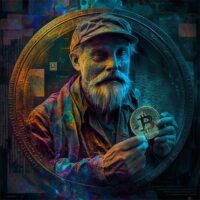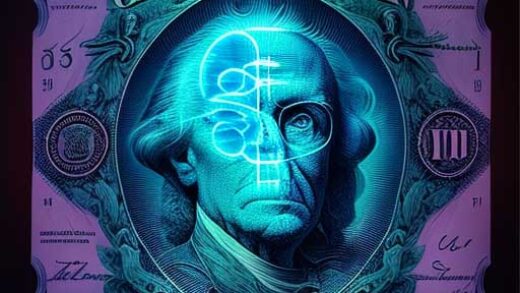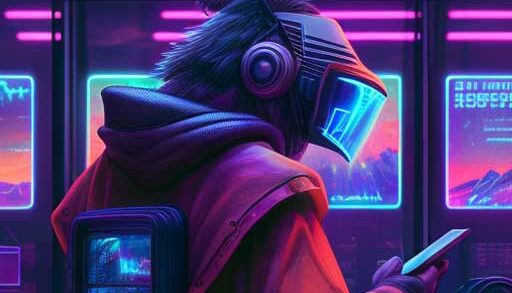As a digital artist, you may be looking for innovative ways to monetize your artwork using NFT. One approach that’s been gaining popularity is leveraging non-fungible tokens (NFTs) to sell your art. Here are ten strategies for using NFTs to monetize your digital art:
- Sell a unique digital asset as an NFT: Design a one-of-a-kind digital art piece that can be sold to collectors and investors on various online marketplaces.
- License your digital art using NFTs: Grant licenses to buyers, allowing them to use and display your artwork while you retain ownership of the original piece.
- Offer fractional ownership of your digital art: Break ownership of your digital art into smaller fractions using NFTs, enabling multiple investors to purchase a stake in your artwork.
- Create an art-based game or application: Use NFTs to create games or applications that incorporate your digital art, providing another source of revenue.
- Establish a social token for your art: Create a social token that allows supporters to purchase and trade your digital art while gaining exclusive access to your work or other benefits.
- Sell limited editions of your artwork: Use NFTs to create limited editions of your digital art, adding exclusivity and scarcity.
- Create a membership program: Use NFTs to offer membership to a community of supporters, providing access to exclusive content, discounts, or other perks.
- Sell digital collectibles: Create a collection of digital collectibles using NFTs, such as a series of trading cards or unique characters.
- Offer commissions as NFTs: Sell custom commissions as NFTs, providing buyers with a unique and one-of-a-kind piece of art.
- Bundle your digital art with other products: Use NFTs to bundle your digital art with other products, such as physical merchandise or other digital goods, adding value to your artwork.
Article structure:
Gamification
NFTs can also be used to create interactive and gamified experiences for users. This can involve developing nonfungible tokens that are used as game assets or that users can play with. For example, in the game Axie Infinity, players can buy, sell, and trade NFTs to build their characters. Furthermore, NFTs can be used as rewards for achieving specific goals or activities within an app or game. For instance, a fitness app might offer nonfungible tokens to users who meet their daily workout goals, encouraging users to engage with the app and stay motivated.
Royalties
Royalties With NFTs, artists can set up smart contracts that automatically pay them a percentage of the sale every time their NFT is resold on a secondary market. This allows artists to continue to benefit from their work even after the initial sale. For instance, digital artist Pak’s NFT “The Fungible” was sold for $502,000 and set up to pay the artist a 10% royalty on all future sales. As a result, since the initial sale, the NFT has been resold several times, and the artist has earned more than $2 million in royalties.
Fractional ownership
Fractional ownership is a strategy for monetizing digital art that involves dividing ownership of an artwork into smaller parts and selling them as tokens. This enables multiple investors to purchase a stake in the artwork. For instance, an artist can create 100 tokens for a piece of art and sell them to 100 different buyers, with each token representing a share of the artwork. This approach allows investors to own a piece of the artwork without having to purchase the entire piece, while also providing the artist with additional revenue streams.
Dynamic NFTs
Dynamic NFTs offer a novel and evolving experience for owners as they change over time. By utilizing external data sources, such as social media feeds or actual events, dynamic NFTs update the artwork to create a unique and personalized experience for each owner. For instance, “The Eternal Pump” is a dynamic NFT that reacts to the cryptocurrency market’s rise and fall, becoming more intricate and elaborate as the value of cryptocurrencies increases and simpler and abstract as their value decreases.
Dynamic NFTs offer collectors the chance to witness the artwork’s evolution and feel more engaged with the artwork as a result. Collectors can monetize dynamic NFTs through auctions, where bidders can compete for ownership, with highly sought-after dynamic NFTs commanding a high price. In addition, artists can generate revenue by offering exclusive dynamic NFTs to subscribers via a subscription-based model. These NFTs can vary regularly, providing subscribers with a constant stream of fresh and unique content.
Physical assets
NFTs can be linked to physical assets to provide a way to authenticate the ownership and transfer of both the physical object and the associated digital asset. This can be achieved by using a unique code or identifier to tie the two together.
Moreover, NFTs can also represent ownership of physical assets like real estate or vehicles. A company called CarForce is currently working on NFTs that serve as digital car keys for high-end automobiles. The NFTs allow the owner to enter and operate the actual car, while also verifying ownership and providing a way to transfer the vehicle and associated digital asset.
Good to know: DeFi and Web3: Breathtaking features that you don’t know


